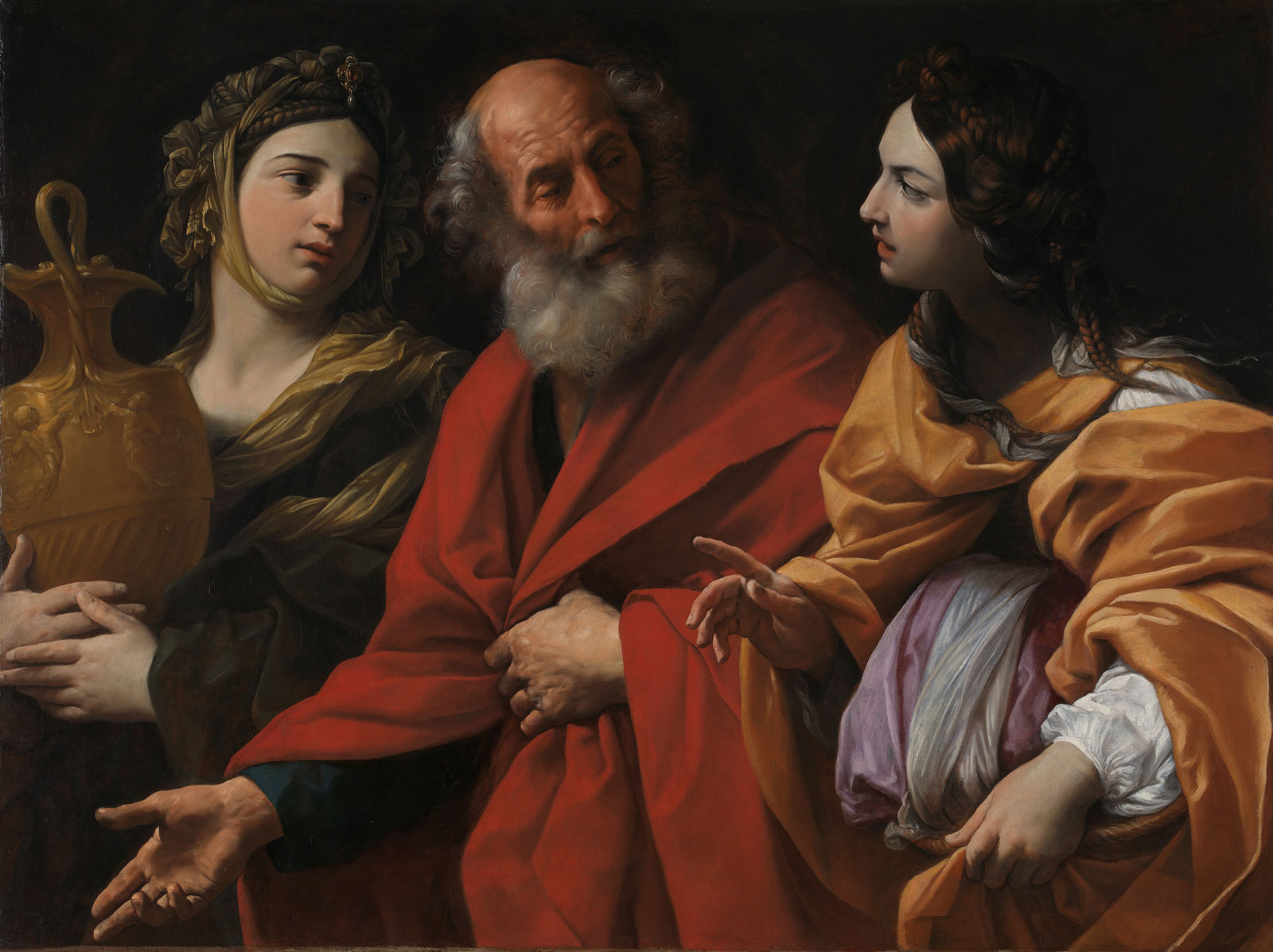Lot and his daughters
Guido Reni

The painting depicts a biblical episode narrated in the book of Genesis, in which Lot flees from the city of Sodom destroyed by divine punishment, and goes to hide in a cave. There, stunned by wine, he lies with two of his daughters, thus ensuring the line of descent. Guido is faithful to the sacred text, depriving the scene of any complacency and erotic allusions, and brings to play a certain severity in the featureless surroundings, as he soberly focuses on the narrative fulcrum, which stands out against a dark, neutral background. The protagonists are dressed in voluminous, richly coloured robes, with the extreme precision seen in the women’s hairstyles playing off against the measured naturalism of Lot’s hair. We see a treatment of the flesh tones – in the two women in particular – that echoes the girls painted by Guido for the Casino dell’Aurora Pallavicini (1614). This similarity is confirmed by the gestural eloquence and the ability to establish dialogue through a play of glances.
Studies generally trace the execution of this painting back to Guido’s return to Bologna after his stay in Rome, between 1615 and 1616, although it was first recorded in a document in 1640, in an inventory of Palazzo Lancellotti in Rome. While we are unable to establish with certainty that the work was commissioned by the Lancellotti family – unless we base this supposition on their interest in contemporary Emilian painting testified to by the presence in their collection of another painting by Reni, Susanna and the Elders – we cannot rule out that the family purchased the painting directly from the artist. In this period, works of similar subject matter and size, reflecting contemporary tastes, were in fact produced in Rome. These included the work of Giovan Francesco Guerrieri, whose own Lot and His Daughters, dated 1617, is in the Borghese collection.
It is precisely its format, as well as a certain tenebrist style, seen in the background and in the marked outlines of the faces, that suggested the placement of the painting in the Caravaggio room in the Borghese Gallery. The painter from Lombardy in fact revived, from the sixteenth-century Venetian tradition, “half-figure” painting, of which he is considered the inventor in the seventeenth century. The “natural” dimensions of the characters, depicted only from the waist up, were perfectly suited to the size of the canvases, ideal for covering the walls of aristocratic collections.